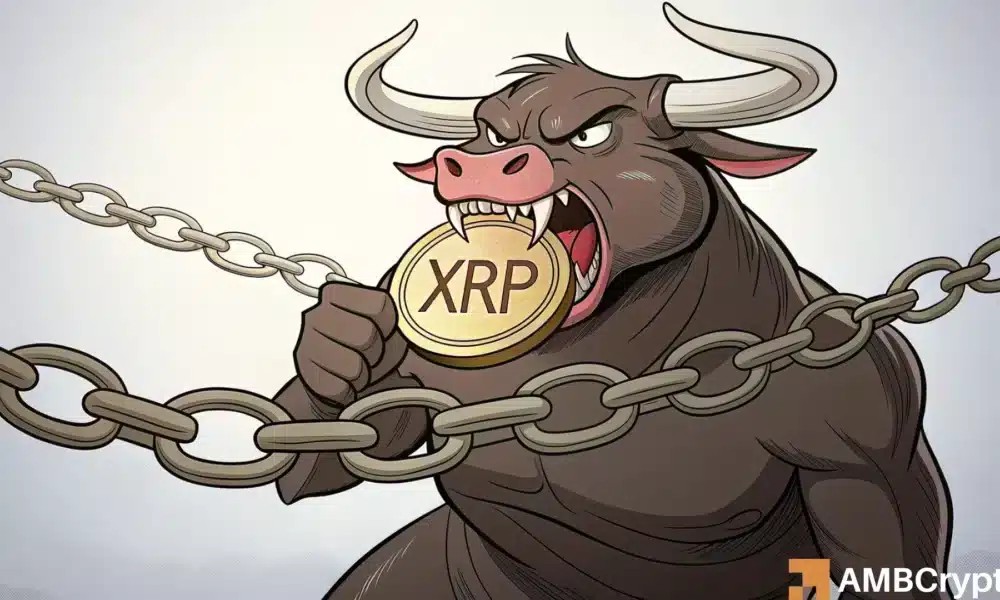XRP vs. Chainlink: The Shift in Smart Money Amid Regulatory Clarity
In recent weeks, the cryptocurrency market has witnessed notable shifts in investor behavior, particularly between Ripple’s XRP and Chainlink’s LINK. Despite the favorable conditions surrounding XRP, including potential legal settlements with the SEC and positive market sentiments, it has struggled to maintain momentum. In contrast, Chainlink has seen significant gains, prompting questions about the future positioning of both assets. This article delves into the dynamics at play, the performance of both cryptocurrencies, and the implications for smart money strategies in the rapidly evolving crypto landscape.
The Current Landscape of XRP
XRP entered August with a promising outlook. Factors such as hopeful SEC settlement news, the rising trend of Bitcoin reaching its all-time highs, and an overall positive market sentiment set the stage for a potential breakout. However, despite these catalysts, XRP has remained stagnant, with only a slight increase of 0.13% from its opening price of $3.02. The persistent inability of XRP to maintain the crucial $3 support level – losing it three times this month – raises concerns among investors about its future performance. This stagnation stands in stark contrast to Chainlink, which has been surging, thus capturing the attention of market players.
The Rise of Chainlink
Chainlink, on the other hand, has shown strong performance metrics, achieving nearly a 50% surge to around $24. The LINK/XRP trading pair evidenced a decisive monthly candle print of +42%, highlighting Chainlink’s structural breakout – its largest since 2020. This remarkable movement suggests a clear rotation in investor interest, shifting focus from XRP to LINK. Notably, the shift isn’t purely technical; it reflects a broader alignment of market sentiment, infrastructure advantages, and an influx of smart money into the Chainlink ecosystem.
Smart Money and Capital Flows
Recent capital flows indicate a significant divergence between XRP and Chainlink. Whales have diverted approximately $56 million into Chainlink in the past month, suggesting a strategic move toward what many consider a more promising asset amidst regulatory uncertainties that XRP faces. This influx is a testament to the growing recognition of Chainlink’s utility and its favorable positioning against regulatory concerns. The notable rise in LINK’s price also aligns with broader trends of on-chain Fear of Missing Out (FOMO), driving even more investment into its robust network.
The Regulatory Advantage of Chainlink
One of the essential differentiators between XRP and Chainlink lies in their infrastructure and regulatory positioning. Chainlink’s decentralized oracle network is increasingly being viewed as more regulatory-friendly, which is a significant advantage considering ongoing regulatory scrutiny in the crypto space. LINK plays a pivotal role in the decentralized finance (DeFi) sector, powering most platforms’ data layers. With Chainlink commanding approximately 68% market share in the oracle space, it stands as the unofficial standard, demonstrating resilience and adaptability to regulatory pressures that XRP may not currently enjoy.
Total Value Secured: A Key Metric
When evaluating the DeFi landscape, Chainlink’s Total Value Secured (TVS) metric provides critical insight into its dominance. Chainlink has essentially become the backbone, contributing nearly $10 billion to the DeFi ecosystem, pushing TVS to three-year highs. In contrast, XRP’s DeFi TVL remains a fraction of that, clocking in at just over $90 million. This substantial disparity, quantified by a staggering 700-fold difference, underscores Chainlink’s stronghold as the preferred infrastructure for DeFi applications while XRP struggles in this domain.
Conclusion: Where Capital is Concentrating
In summary, the market dynamics between XRP and Chainlink reflect broader shifts in smart money and investor sentiment. As Chainlink capitalizes on its regulatory-friendly infrastructure and industry dominance, XRP finds itself mired in legal uncertainties, limiting its growth potential. The recent breakout of LINK versus XRP is more than a market trend; it signals a profound reallocation of resources as investors seek safer, more promising assets in a complex regulatory environment. As the landscape evolves, keeping an eye on these two cryptocurrencies will be crucial for investors aiming to capitalize on future opportunities.


